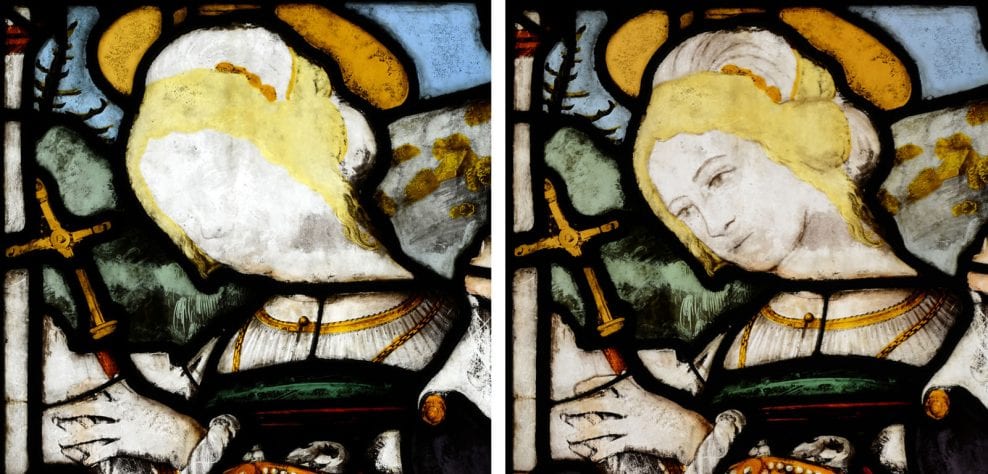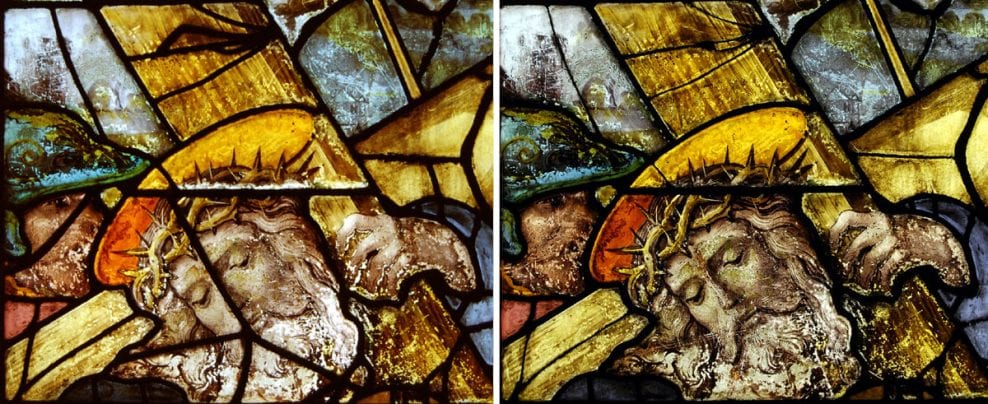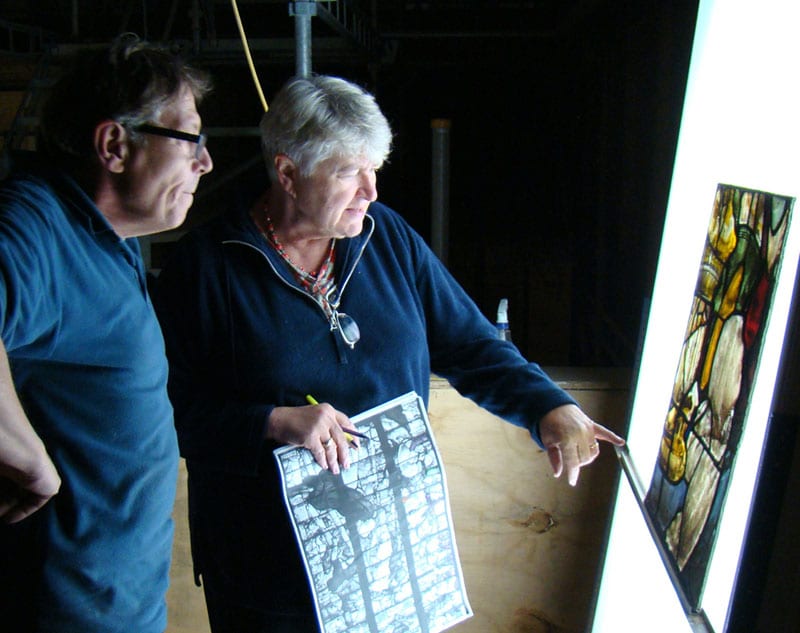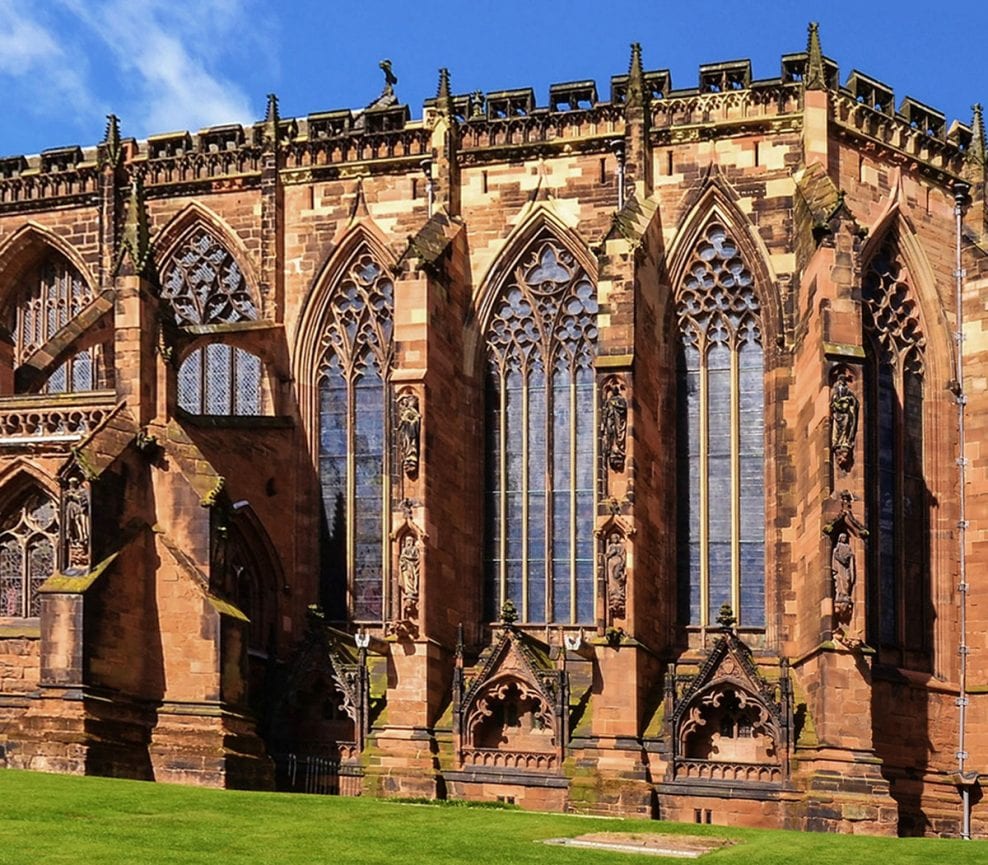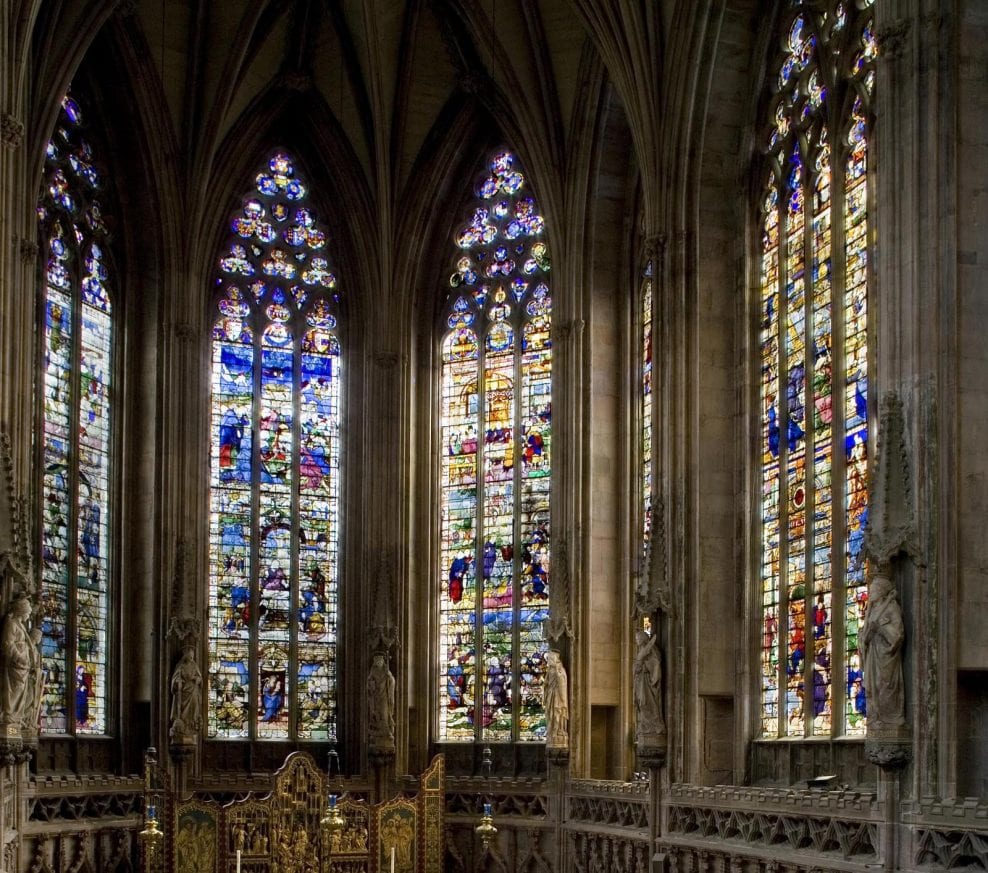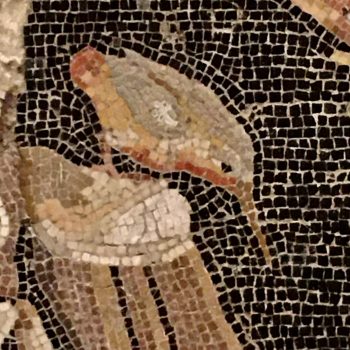Projects
Lichfield Cathedral, Staffordshire: Conserving and Protecting the ‘Herkenrode’ Windows
Between 2010 and 2015, Barley Studio conserved and protected nine sixteenth-century stained glass windows, each approximately 11 m high, seven of which were originally made for the Abbey of Herkenrode, Liège.
The opportunity to conserve this magnificent stained glass arose due to the need to restore the surrounding stonework, which was badly eroded and no longer able to support the glass; all of the windows were removed to facilitate the stonework repairs.
During the project we were privileged to collaborate with stained glass historians from the Belgian Corpus Vitrearum Medii Aevi (CVMA), Yvette Vanden Bemden and Isabelle Lecocq, who regularly visited Barley Studio to study the Herkenrode windows as they were being conserved. A joint publication by the English and Belgian CVMA on these beautiful and important windows is planned.
As we examined the glass we were astonished at the remarkable completeness of the original artwork, due to its long history of minimal and sympathetic restoration. Indeed, we believe that the Herkenrode windows in Lichfield comprise more original sixteenth-century glass than survives in present-day Belgium.
Barley Studio’s conservation approach has continued this tradition of minimal intervention, whilst also introducing some innovative conservation techniques. The nineteenth-century leadwork of the panels was still in good condition and quite sympathetic to the glass, and so we decided not to dismantle and re-lead the windows, thus avoiding much danger to the historic glass. Instead, many mending leads were reduced or removed completely by shaving away the surface leaf of the lead calme, greatly reducing the visual intrusion of these leads and helping to bring forward the original design lines.
The glass painting shows the remarkable skill of the Renaissance artists, with layers of delicate shading combining different colours of grisaille paint. However, in many areas the detail has faded due to corrosion of the glass and paint, caused by condensation on the internal surface. Developing another innovative conservation technique, we restored some of this lost painted detail by painting on the reverse of the glass using a cold (unfired) paint; a simple, effective and completely reversible intervention.
It has only been possible to undertake these conservation innovations because when the windows were re-installed, they no longer had to act as the weather shield for the building. Our new external protective glazing, fabricated from our specially kiln-distorted (Barley Bent) glass and installed in the original glazing groove, keeps the building water-tight. The historic glass is now supported in site-specific manganese bronze frames, fabricated in-house in our metalwork department, and fixed to the inside stonework. Internal ventilation effectively prevents condensation on the historic glass, helping to preserve both our conservation work and this wonderful artwork for many generations to enjoy in the future.
